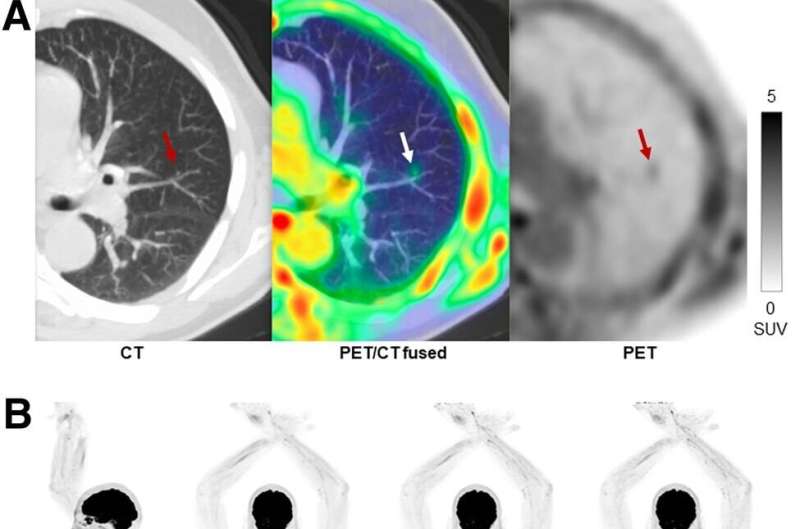Total-body PET imaging exceeds industry standards

A performance evaluation of the uEXPLORER total-body PET/CT scanner showed that it exhibits ultra-high sensitivity that supports excellent spatial resolution and image quality. Given the long axial field of view (AFOV) of the uEXPLORER, study authors have proposed new, extended measurements for phantoms to characterize total-body PET imaging more appropriately. This research was published in the June issue of The Journal of Nuclear Medicine.
uEXPLORER is the world's first commercially available total-body PET scanner. The scanner has an AFOV of 194 cm, which allows PET data collection from the entire human body simultaneously and greatly increases PET scanner sensitivity.
Characterization of positron emission tomography (PET) scanners has commonly followed the National Electrical Manufacturers Association (NEMA) NU 2-2018 standard, which defines a set of experiments and analyses using standardized imaging phantoms. This permits valid comparisons between different PET systems. In this study, researchers utilized phantoms to assess the uEXPLORER's sensitivity, count-rate performance, time-of-flight resolution, spatial resolution, image quality and accuracy of corrections based on NEMA NU 2-2018 standards. Human studies were also conducted for further characterization.
"Our results with the uEXPLORER PET/CT system show a major gain in sensitivity compared to conventional PET systems, approximately 15 to 68-fold higher than others," noted Eric Berg, Ph.D., project scientist in biomedical engineering at the University of California, Davis. "We documented excellent spatial resolution that is well supported by the increased image signal to noise ratio. Additionally, post-reconstruction image smoothing was unnecessary in both phantom and human imaging studies."
Although the NEMA NU 2-2018 measurements were performed in this characterization of the uEXPLORER scanner, these standards are defined only for PET scanners with an AFOV of no more than 65 cm and are not well suited for long-AFOV scanners, like the 194-cm-long uEXPLORER. As part of the study, researchers devised a set of additional informative phantom measurements that to evaluate uEXPLORER more accurately for total-body PET imaging.
"This work provides a benchmark for testing the performance of long axial field of view scanners, which are set to revolutionize the capabilities of PET scanning. Understanding their performance is essential for improving the quality of scans, scanning more quickly, scanning with lower activity, or scanning much later after radiotracer injection," said Ramsey D. Badawi, Ph.D., vice-chair for research in the department of radiology at the University of California, Davis. "These capabilities have the potential to significantly improve patient care in all the areas where PET is currently used, and in addition in new areas, such as autoimmune disease, metabolic disease and other chronic conditions where historically dose considerations have excluded it's use."
More information: Benjamin A. Spencer et al, Performance Evaluation of the uEXPLORER Total-Body PET/CT Scanner Based on NEMA NU 2-2018 with Additional Tests to Characterize PET Scanners with a Long Axial Field of View, Journal of Nuclear Medicine (2020). DOI: 10.2967/jnumed.120.250597




















